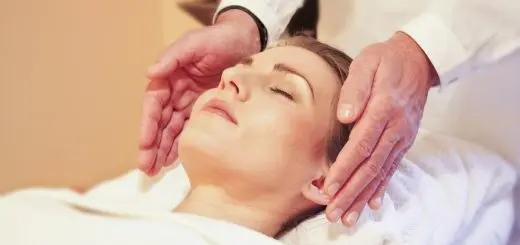The Essence of Reiki: Channeling Healing Energy for Wellness

Looking for more amazing products? Check out our online store and explore our collection here! Happy shopping!
Before diving in, please note: This post is for informational purposes only. If you’d like to know more about how we approach topics, feel free to check out our friendly Disclaimer Page.
Hey there, amazing readers! 
We’re committed to delivering quality posts, and your support (even just sticking around despite the ads) means everything to us. So, bear with us, and thanks for helping us keep the good vibes rolling. Now, on to the fun stuff!
TRANSLATE BUTTON AT THE END OF THE ARTICLE
Introduction: Understanding the Power of Reiki Healing
Reiki, a Japanese energy healing practice, has gained popularity worldwide for its ability to promote wellness and balance in the mind, body, and soul.
The word "Reiki" is derived from two Japanese words: "Rei," meaning universal life force, and "Ki," meaning energy.
Reiki practitioners believe that this life force energy flows through all living beings and has the power to heal and restore.
By channeling this energy, Reiki practitioners aim to remove energetic blockages and promote overall well-being.
Reiki healing is a non-invasive and gentle practice that can be used in conjunction with other medical treatments or as a standalone therapy.
It involves the practitioner placing their hands lightly on or just above the body of the recipient, allowing the energy to flow through them and into the recipient.
This energy facilitates the body’s natural healing processes, helping to address physical, emotional, and spiritual imbalances.
Origins of Reiki: Tracing its Ancient Japanese Roots
Reiki was developed by Mikao Usui, a Japanese Buddhist monk, in the early 20th century.
Usui embarked on a spiritual quest to discover the secrets of healing and enlightenment.
After a 21-day meditation retreat on Mount Kurama, Usui experienced a profound spiritual awakening and received the knowledge and ability to heal through the channeling of universal life force energy.
Usui then created a system of healing called Reiki, which he taught to others.
The practice spread throughout Japan and eventually made its way to the Western world.
Today, there are various forms of Reiki, but they all trace their roots back to Usui’s original teachings.
The Five Reiki Principles: Guiding Lights for Harmony
The Five Reiki Principles, also known as the Five Reiki Precepts or the Five Reiki Ideals, serve as guiding principles for Reiki practitioners.
They are:
Just for today, I will not be angry.
Just for today, I will not worry.
Just for today, I will be grateful.
Just for today, I will do my work honestly.
Just for today, I will be kind to every living thing.
These principles emphasize the importance of living in the present moment, maintaining a positive mindset, practicing gratitude, acting with integrity, and cultivating compassion.
By integrating these principles into their daily lives, Reiki practitioners aim to create a harmonious and balanced existence.
Channeling Energy: How Reiki Heals the Mind, Body, and Soul
Reiki healing is based on the belief that there is a flow of life force energy that sustains all living beings.
This energy is said to flow through the body along energy pathways called meridians and is responsible for maintaining physical, mental, and emotional well-being.
When this energy becomes blocked or depleted, imbalances and illnesses can occur.
During a Reiki session, the practitioner acts as a channel for this life force energy, allowing it to flow through their hands and into the recipient’s body.
The energy works to dissolve energetic blockages and restore balance on all levels.
It is believed that the energy goes where it is most needed, addressing physical ailments, releasing emotional traumas, and promoting spiritual growth.
The Role of Chakras in Reiki: Balancing Life Force Energy
In Reiki, the chakras, which are energy centers located along the midline of the body, play a crucial role in energy balance and healing.
There are seven main chakras, each associated with specific physical, emotional, and spiritual aspects of our being.
These chakras are believed to spin and radiate energy, and when they are open and balanced, they contribute to our overall health and well-being.
During a Reiki session, the practitioner may focus on specific chakras that appear imbalanced or blocked.
By channeling healing energy into these areas, the practitioner aims to restore balance and harmonize the flow of life force energy throughout the body.
This can help alleviate physical symptoms, release emotional patterns, and enhance spiritual connection.
The Reiki Session: A Step-by-Step Guide to Healing Sessions
A typical Reiki session begins with the practitioner and recipient discussing any specific physical or emotional concerns the recipient may have.
The recipient then lies down fully clothed on a massage table or sits comfortably in a chair.
The practitioner may play soft music or use essential oils to enhance the relaxation experience.
The practitioner begins by grounding themselves, connecting to the universal life force energy, and setting their intention for the session.
They then place their hands lightly on or just above various areas of the recipient’s body, following a specific hand placement sequence.
The practitioner may hold their hands in each position for a few minutes before moving to the next.
During the session, the recipient may experience sensations such as warmth, tingling, or a sense of peace and relaxation.
It is important to note that every individual’s experience with Reiki is unique.
Some may feel immediate relief from physical symptoms, while others may experience emotional release or a deep sense of relaxation.
Benefits of Reiki: Enhancing Well-being and Reducing Stress
Reiki offers a myriad of benefits for overall well-being and stress reduction.
Some of the potential benefits of Reiki include:
Deep relaxation: Reiki induces a state of deep relaxation, which can help reduce stress, anxiety, and tension.
Pain management: Reiki has been shown to alleviate pain and promote healing in various physical conditions.
Emotional healing: Reiki can help release emotional blockages, promote emotional balance, and support healing from past traumas.
Improved sleep: Reiki has been reported to improve the quality of sleep and promote a sense of calm and peace.
Enhanced immune function: By promoting relaxation and reducing stress, Reiki can support a healthy immune system.
Increased energy levels: Reiki can help restore energy and vitality by releasing stagnant or blocked energy.
Spiritual growth: Reiki can deepen one’s connection to their spirituality and support personal growth and transformation.
Reiki and Western Medicine: A Holistic Approach to Healing
Reiki is often used in conjunction with Western medicine as a complementary therapy.
It is important to note that Reiki is not a substitute for medical treatment, but rather a supportive practice that can enhance the healing process.
Reiki can be integrated into various healthcare settings, such as hospitals, clinics, and wellness centers.
Some healthcare professionals have embraced Reiki as part of a holistic approach to patient care, recognizing its potential to support physical healing, reduce stress, and improve overall well-being.
Reiki Attunements: Unlocking the Practitioner’s Healing Potential
To become a Reiki practitioner, one must undergo a process called attunement or initiation.
During this process, the Reiki master transfers the ability to channel Reiki energy to the student, opening them up to become a conduit for healing energy.
Attunements vary depending on the Reiki lineage and tradition.
They often involve a series of rituals, meditation, and energetic transmissions.
The attunement process is believed to awaken and enhance the practitioner’s natural healing abilities, enabling them to channel Reiki energy more effectively.
Becoming a Reiki Practitioner: Training, Certification, and Ethics
To become a certified Reiki practitioner, one must complete training and receive certifications from a qualified Reiki master.
Reiki training typically consists of multiple levels or degrees, each providing a deeper understanding and connection to Reiki energy.
Level 1 focuses on self-healing and learning the basic hand placements for treating others.
Level 2 introduces symbols and techniques for distance healing.
Level 3, also known as the Reiki Master level, involves further attunements and training to become a Reiki teacher or master practitioner.
Ethics play a crucial role in Reiki practice.
Practitioners are encouraged to adhere to a code of conduct that promotes integrity, confidentiality, and respect for the recipient’s autonomy.
It is important for practitioners to maintain professional boundaries and provide a safe and compassionate healing environment.
Incorporating Reiki into Daily Life: Practical Tips for Self-Healing
Reiki can be practiced not only during dedicated healing sessions but also in everyday life for self-healing and well-being.
Here are some practical tips for incorporating Reiki into daily life:
Self-treatment: Set aside time each day to give yourself a Reiki treatment.
Focus on areas of your body that need healing or simply allow the energy to flow where it is needed.
Mindfulness and intention: Practice mindfulness and set positive intentions throughout the day, inviting Reiki energy to support your well-being and bring balance to your mind, body, and soul.
Distance healing: Use Reiki symbols and techniques to send healing energy to loved ones, animals, or situations that are in need of support or healing.
Energetic cleansing: Clear and balance your energy by visualizing Reiki energy flowing through your body, removing any energetic debris or stagnant energy.
Gratitude practice: Cultivate gratitude by expressing appreciation for the blessings in your life.
Gratitude opens the heart and invites positive energy flow.
Connecting with nature: Spend time in nature, allowing the healing energy of the earth and surrounding environment to support your well-being.
Reiki-infused objects: Charge objects such as crystals, jewelry, or water with Reiki energy, infusing them with healing vibrations.
Conclusion: Embracing Reiki for Inner Balance and Harmony
Reiki is a powerful and versatile healing practice that can enhance overall well-being, reduce stress, and promote balance in the mind, body, and soul.
Its ancient Japanese roots and principles provide a foundation for a holistic approach to healing and self-care.
Whether used as a complementary therapy or a standalone practice, Reiki offers a gentle and non-invasive way to support physical, emotional, and spiritual healing.
By embracing Reiki and incorporating it into daily life, individuals can tap into the universal life force energy and experience a greater sense of inner balance and harmony.

The Enlightenment Journey is a remarkable collection of writings authored by a distinguished group of experts in the fields of spirituality, new age, and esoteric knowledge.
This anthology features a diverse assembly of well-experienced authors who bring their profound insights and credible perspectives to the forefront.
Each contributor possesses a wealth of knowledge and wisdom, making them authorities in their respective domains.
Together, they offer readers a transformative journey into the realms of spiritual growth, self-discovery, and esoteric enlightenment.
The Enlightenment Journey is a testament to the collective expertise of these luminaries, providing readers with a rich tapestry of ideas and information to illuminate their spiritual path.
Our Diverse Expertise
While our primary focus is on spirituality and esotericism, we are equally passionate about exploring a wide range of other topics and niches 

To ensure we provide the most accurate and valuable insights, we collaborate with trusted experts in their respective domains 
Our blog originally focused on spirituality and metaphysics, but we’ve since expanded to cover a wide range of niches. Don’t worry—we continue to publish a lot of articles on spirituality! Frequently visit our blog to explore our diverse content and stay tuned for more insightful reads.
Hey there, amazing reader! 
Check out our store here and take a peek at some of our featured products below! Thanks for being awesome!











